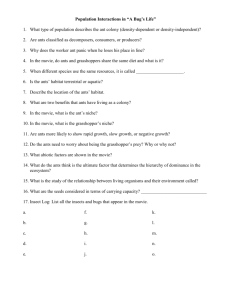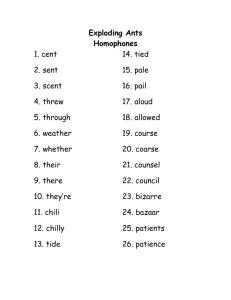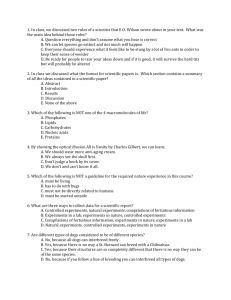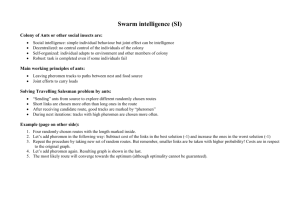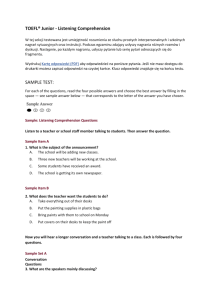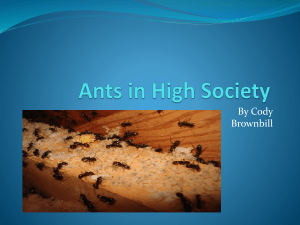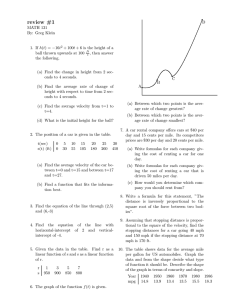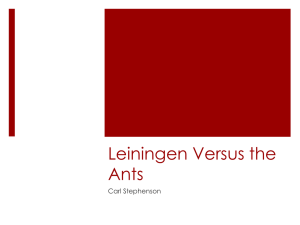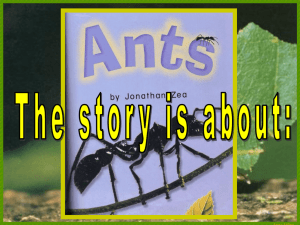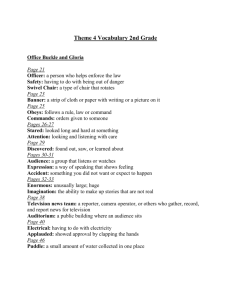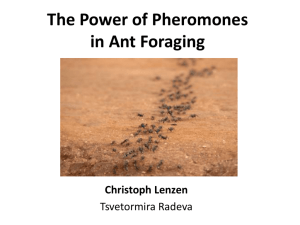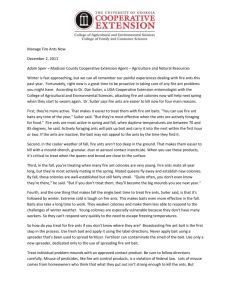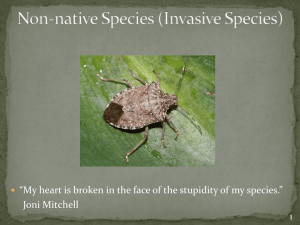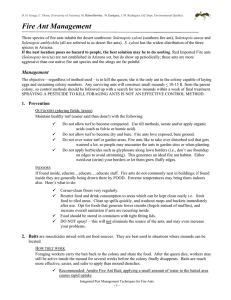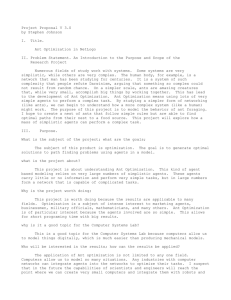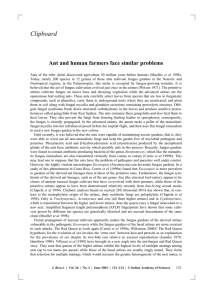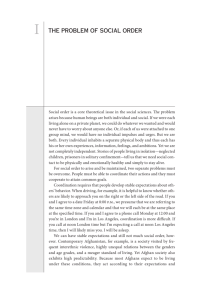Lecture 33
advertisement
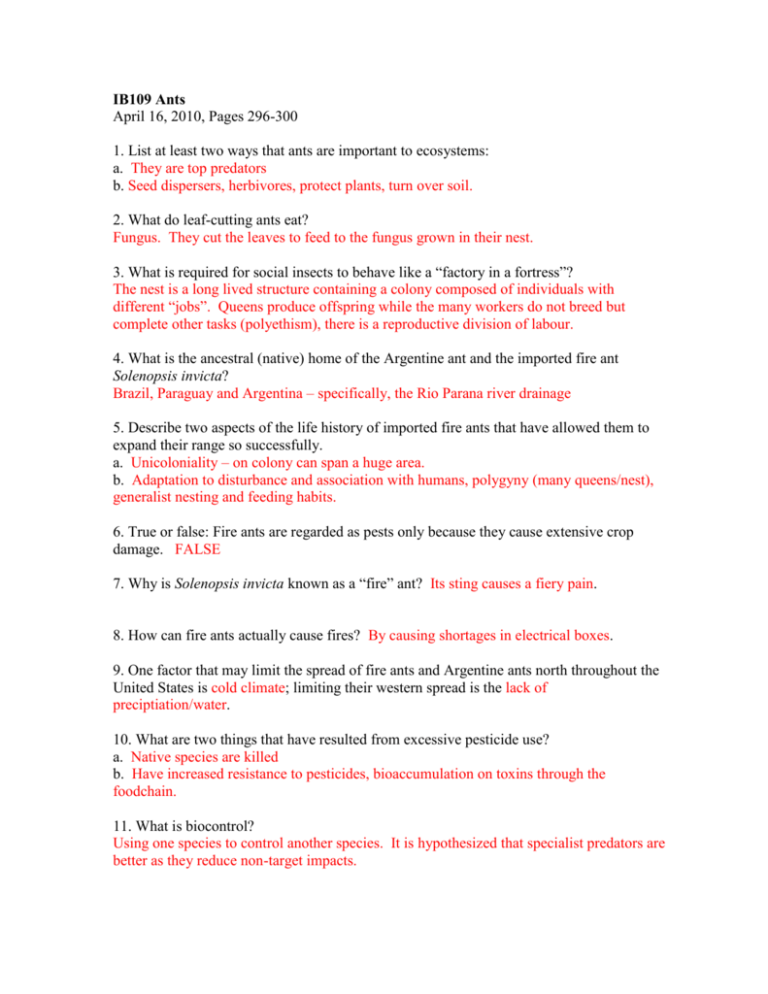
IB109 Ants April 16, 2010, Pages 296-300 1. List at least two ways that ants are important to ecosystems: a. They are top predators b. Seed dispersers, herbivores, protect plants, turn over soil. 2. What do leaf-cutting ants eat? Fungus. They cut the leaves to feed to the fungus grown in their nest. 3. What is required for social insects to behave like a “factory in a fortress”? The nest is a long lived structure containing a colony composed of individuals with different “jobs”. Queens produce offspring while the many workers do not breed but complete other tasks (polyethism), there is a reproductive division of labour. 4. What is the ancestral (native) home of the Argentine ant and the imported fire ant Solenopsis invicta? Brazil, Paraguay and Argentina – specifically, the Rio Parana river drainage 5. Describe two aspects of the life history of imported fire ants that have allowed them to expand their range so successfully. a. Unicoloniality – on colony can span a huge area. b. Adaptation to disturbance and association with humans, polygyny (many queens/nest), generalist nesting and feeding habits. 6. True or false: Fire ants are regarded as pests only because they cause extensive crop damage. FALSE 7. Why is Solenopsis invicta known as a “fire” ant? Its sting causes a fiery pain. 8. How can fire ants actually cause fires? By causing shortages in electrical boxes. 9. One factor that may limit the spread of fire ants and Argentine ants north throughout the United States is cold climate; limiting their western spread is the lack of preciptiation/water. 10. What are two things that have resulted from excessive pesticide use? a. Native species are killed b. Have increased resistance to pesticides, bioaccumulation on toxins through the foodchain. 11. What is biocontrol? Using one species to control another species. It is hypothesized that specialist predators are better as they reduce non-target impacts. 12. What does Pseudoacteon tricuspis do to fire ants? Lay their eggs in fire ant workers, the larvae pupate in the ant’s head. 13. P. tricuspis is a: a. fungus b. fly c. virus d. protozoan 14. Where did get trap-jaw ants get their name from? Their jaws snap shut very quickly. 15. What ways can insects store and amplify power? Have a latch to store energy and a spring to amplify the energy. 16. How many multiples of their body weight can trap-jaw ants generate with their jaws? a. two b. tens c. 100 d. 400



